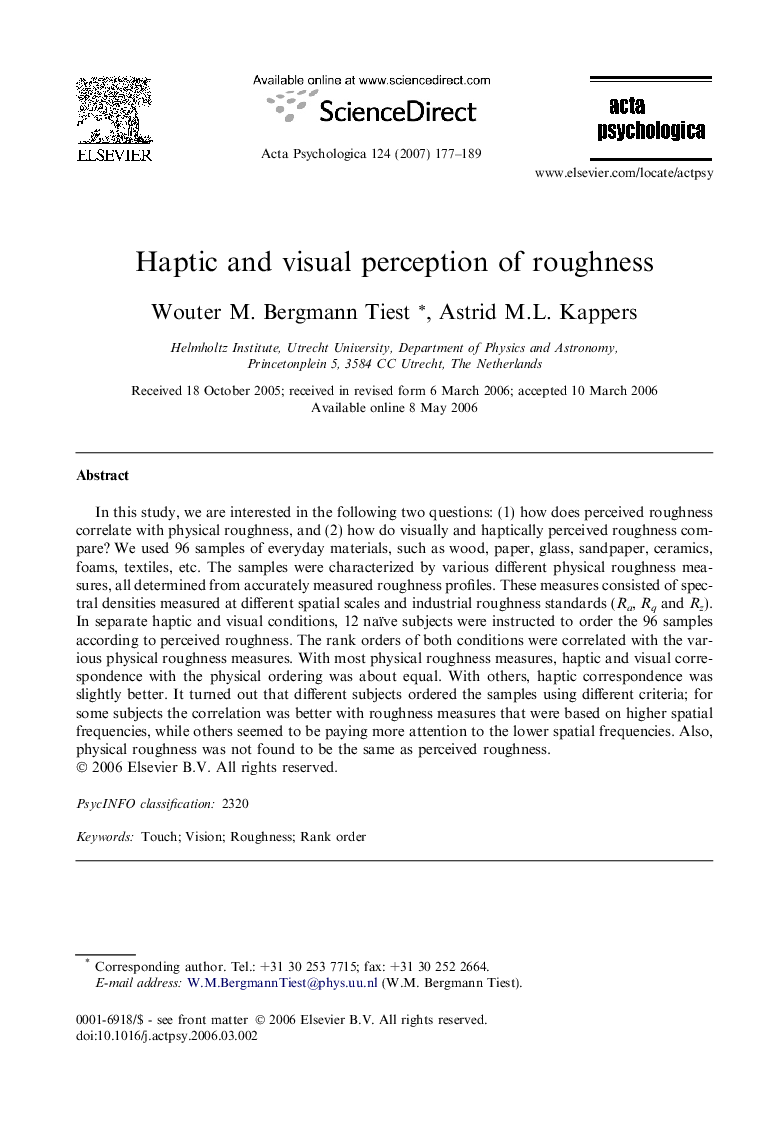| Article ID | Journal | Published Year | Pages | File Type |
|---|---|---|---|---|
| 920518 | Acta Psychologica | 2007 | 13 Pages |
Abstract
In this study, we are interested in the following two questions: (1) how does perceived roughness correlate with physical roughness, and (2) how do visually and haptically perceived roughness compare? We used 96 samples of everyday materials, such as wood, paper, glass, sandpaper, ceramics, foams, textiles, etc. The samples were characterized by various different physical roughness measures, all determined from accurately measured roughness profiles. These measures consisted of spectral densities measured at different spatial scales and industrial roughness standards (Ra, Rq and Rz). In separate haptic and visual conditions, 12 naïve subjects were instructed to order the 96 samples according to perceived roughness. The rank orders of both conditions were correlated with the various physical roughness measures. With most physical roughness measures, haptic and visual correspondence with the physical ordering was about equal. With others, haptic correspondence was slightly better. It turned out that different subjects ordered the samples using different criteria; for some subjects the correlation was better with roughness measures that were based on higher spatial frequencies, while others seemed to be paying more attention to the lower spatial frequencies. Also, physical roughness was not found to be the same as perceived roughness.
Keywords
Related Topics
Life Sciences
Neuroscience
Cognitive Neuroscience
Authors
Wouter M. Bergmann Tiest, Astrid M.L. Kappers,
